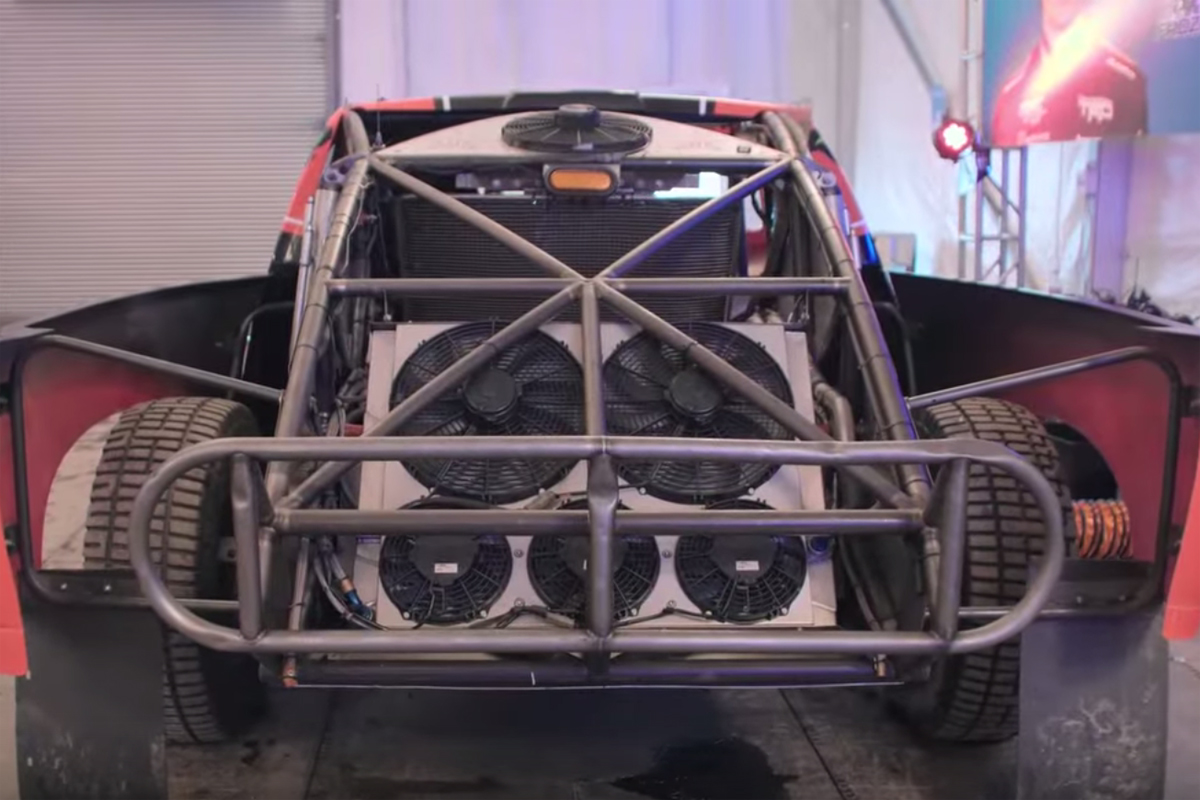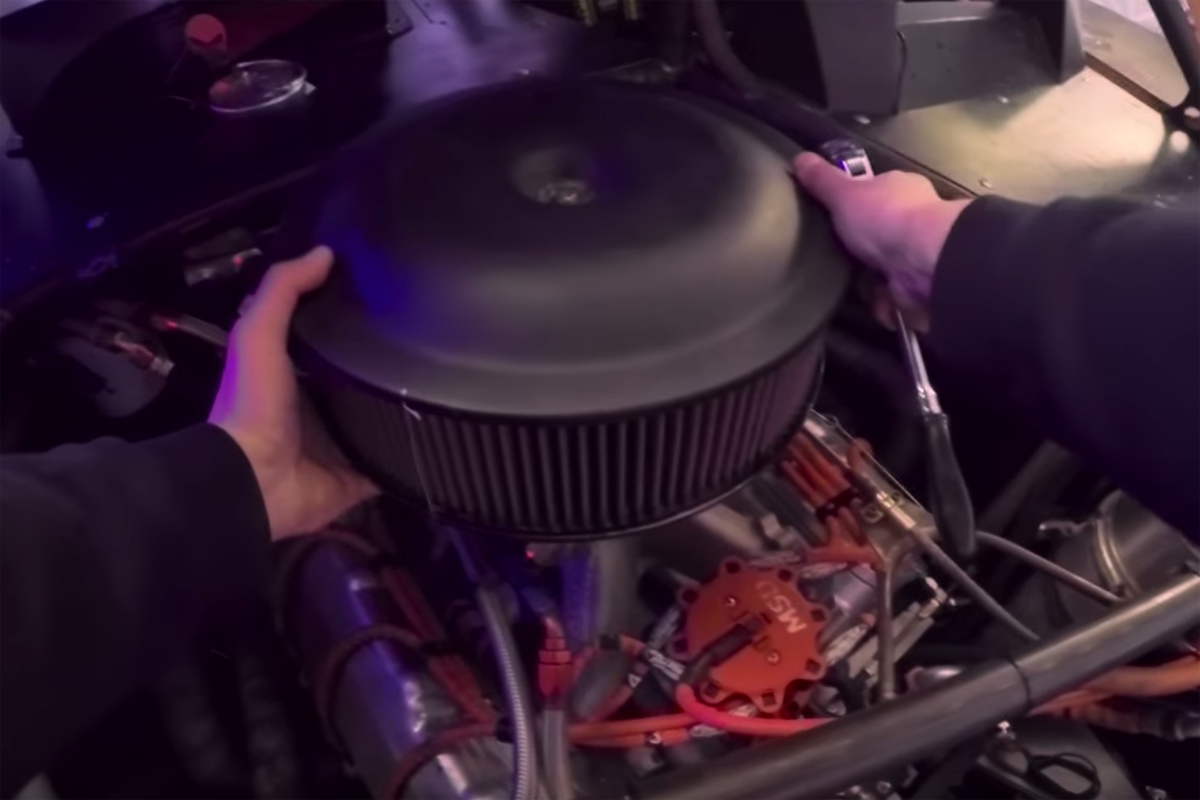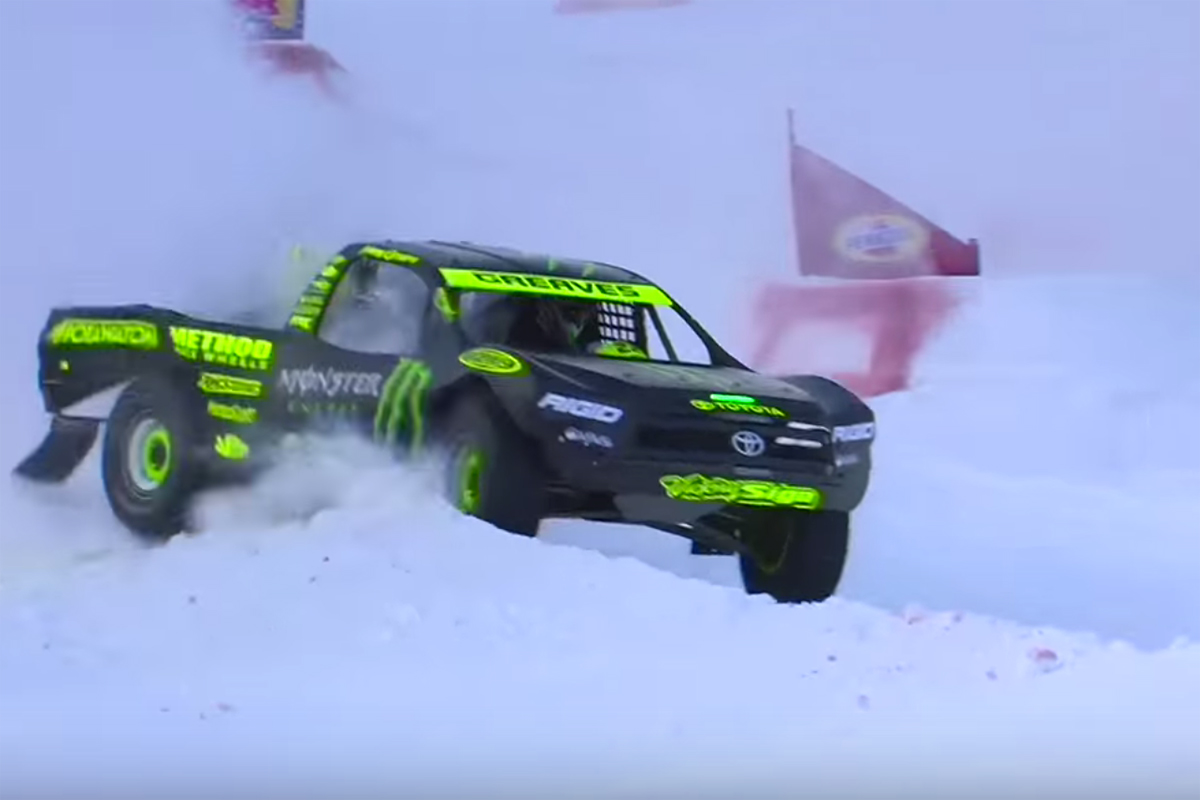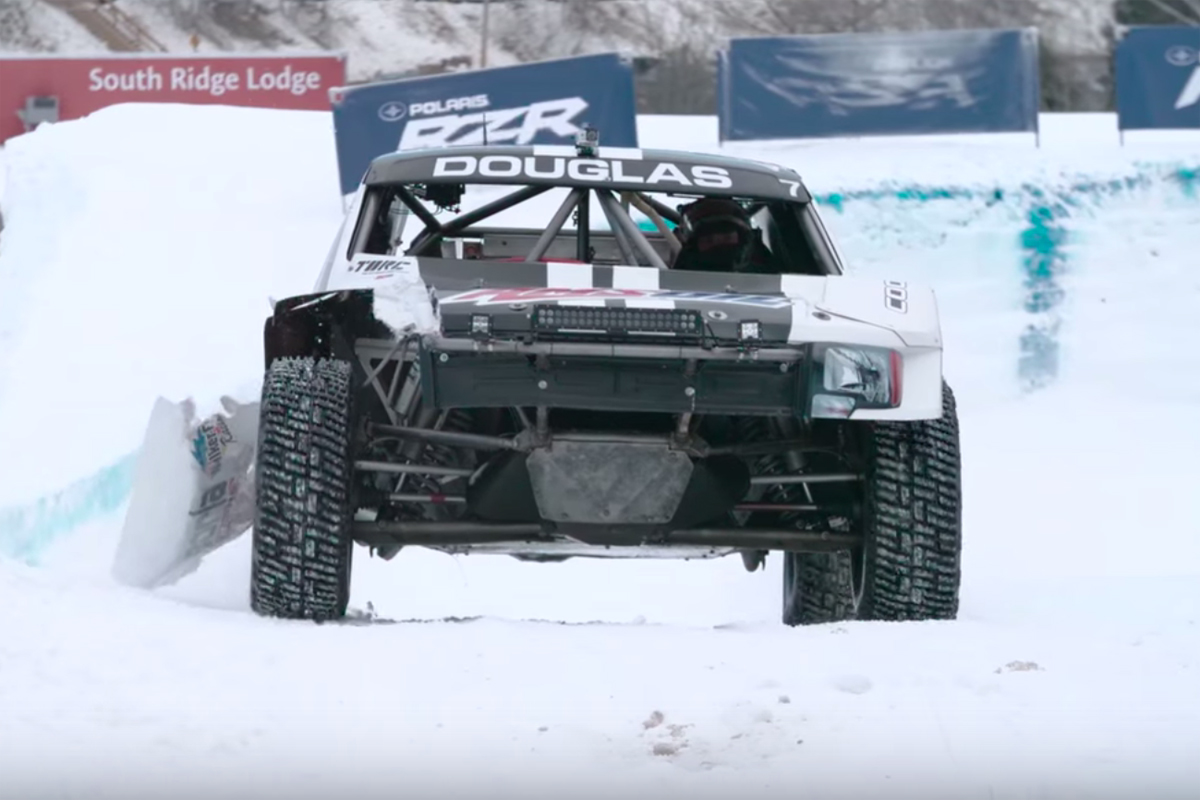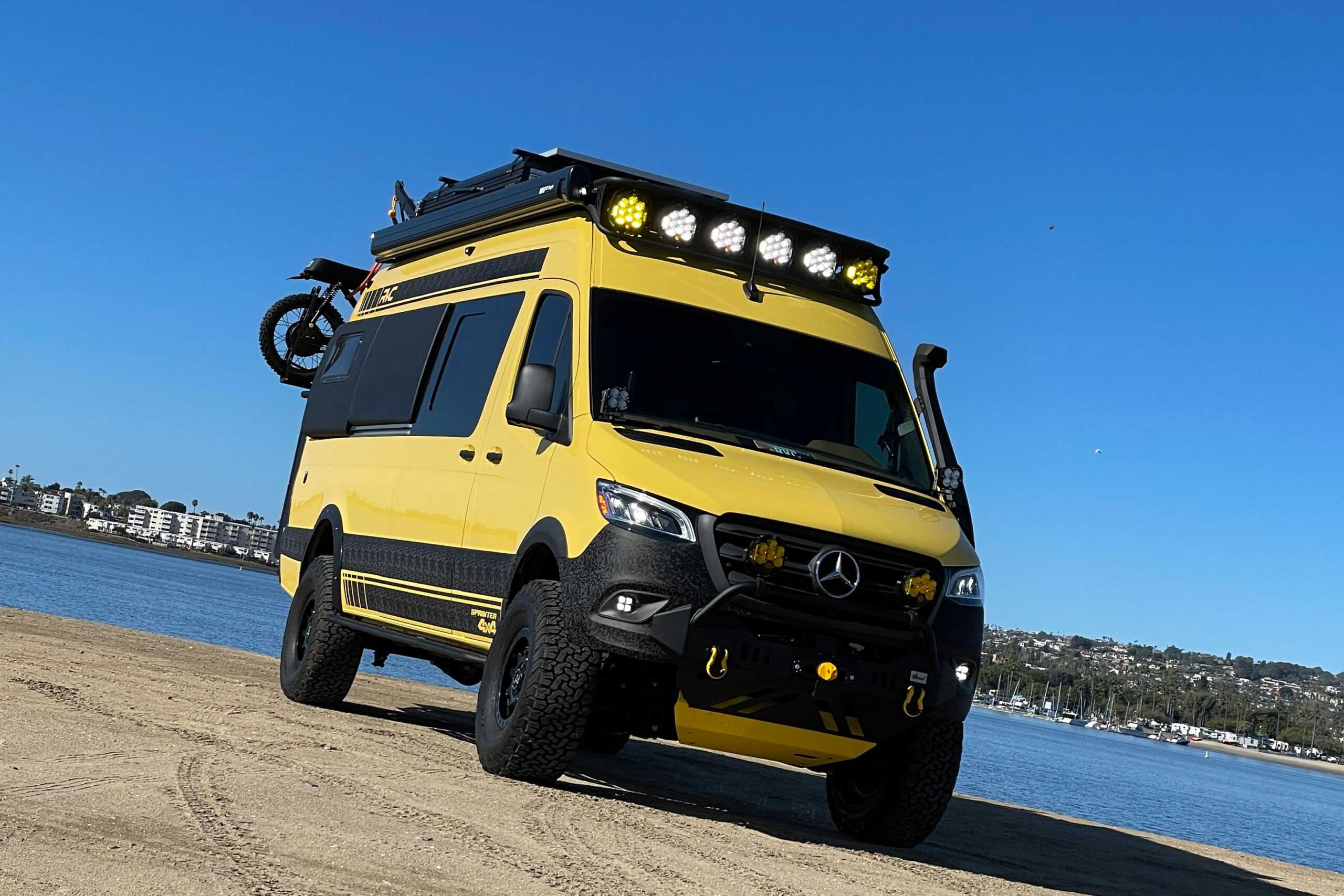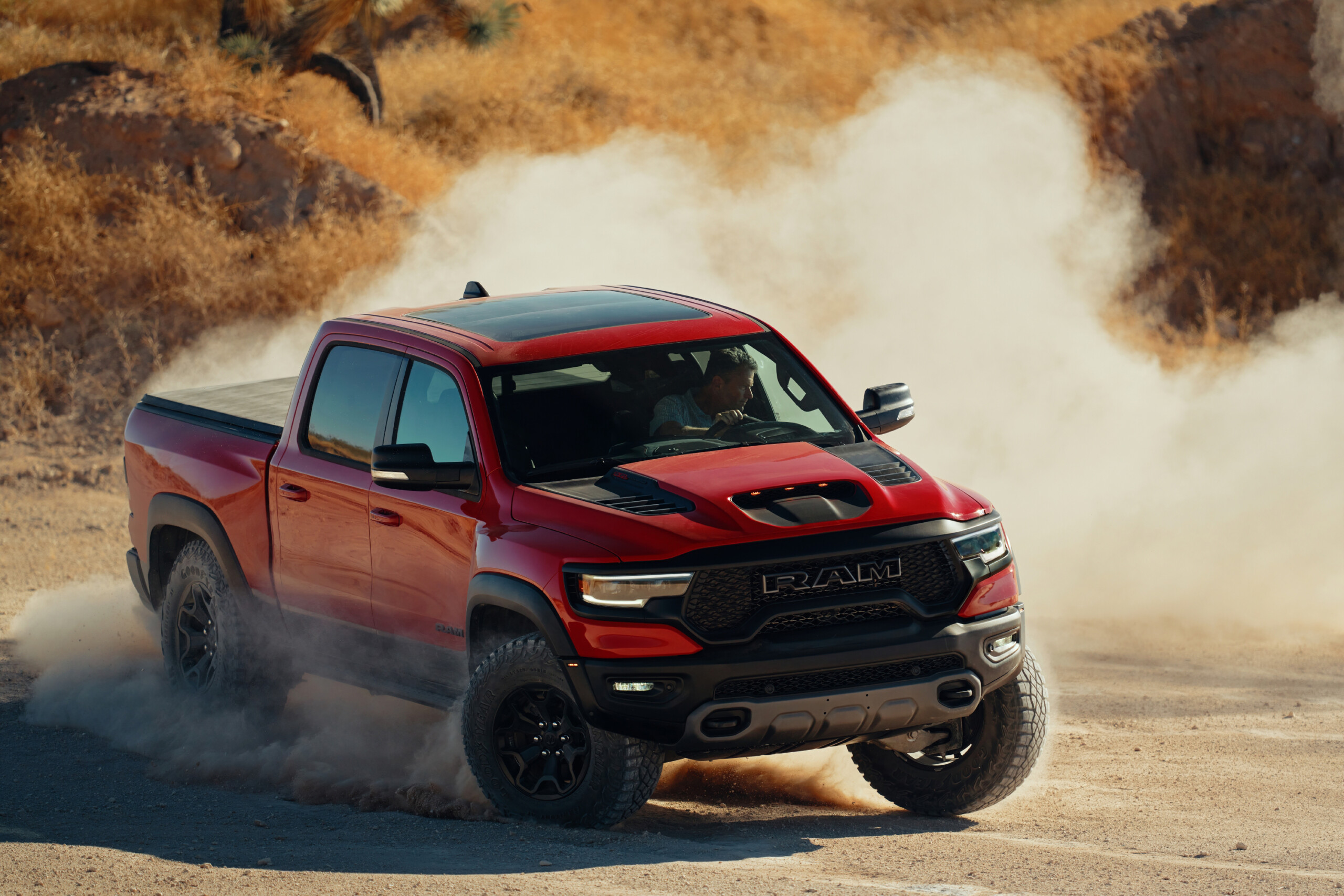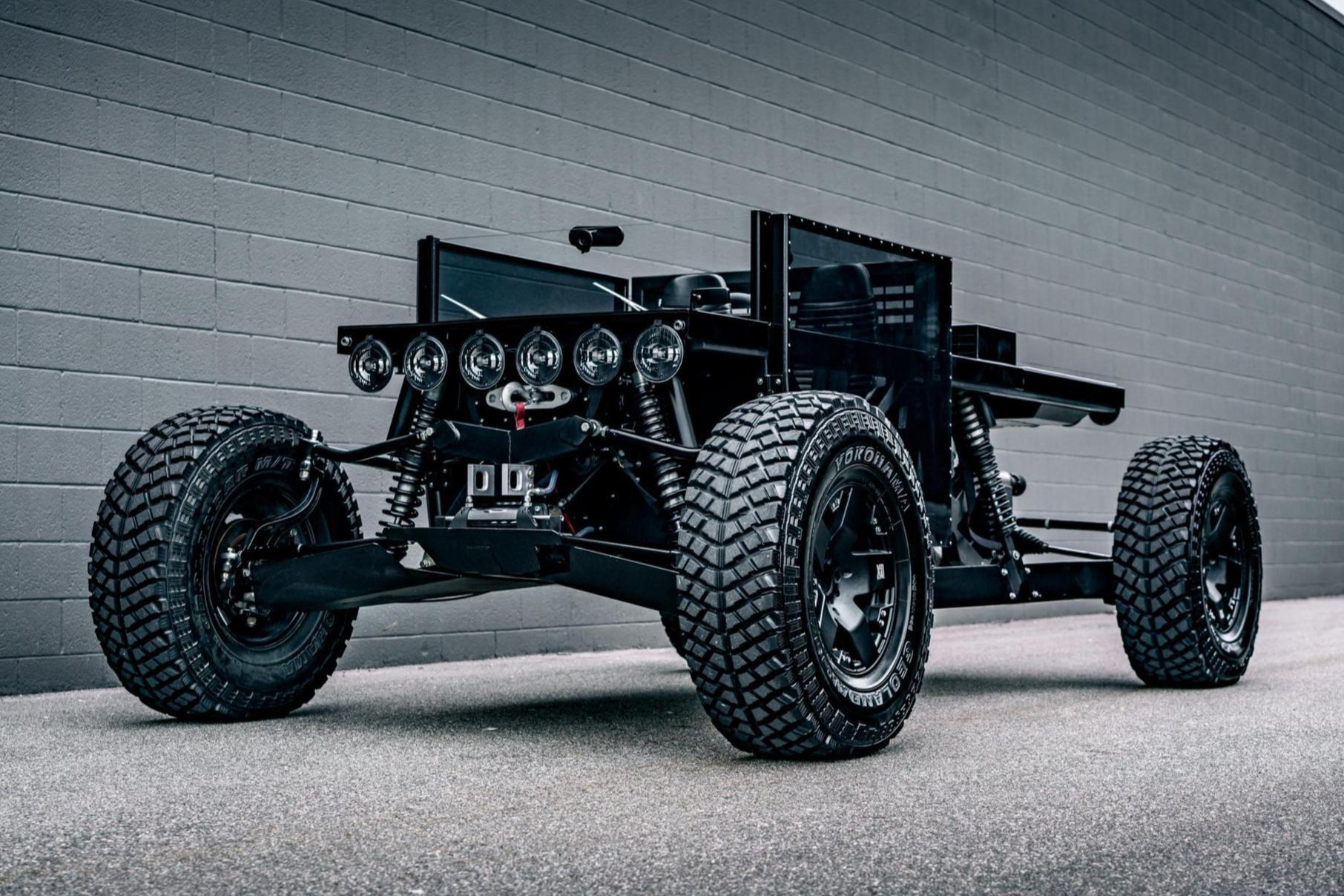Every January, we’re treated to what may be the most exciting snowbound off-road race in the country: the Red Bull Frozen Rush. Favorites like Bryce Menzies, Rob MacCachren, Carl Renezeder, and others (including newbies like Brian Deegan and Chad Hord) made their way to the Sunday River ski resort in Newry, Maine to romp around in the white stuff.
 Also there was Jason Fenske, host of the popular YouTube channel Engineering Explained. Fenske’s background in engineering and passion for teaching his audience about the inner workings of automobiles is always interesting and entertaining, and even more so when applied to the world of short-course off-road racing.
Also there was Jason Fenske, host of the popular YouTube channel Engineering Explained. Fenske’s background in engineering and passion for teaching his audience about the inner workings of automobiles is always interesting and entertaining, and even more so when applied to the world of short-course off-road racing.
The trucks are of the Pro 4 variety, being four-wheel-drive and made from tubular steel chassis and a fiberglass body. Fenske explains that the lack of a windshield or windows is critical to keeping the radiator well-fed with cool air, as it’s mounted directly behind the driver. “This keeps the radiator in a location which isn’t prone to damage, and gives a clean airflow with minimal debris,” he says. “Other coolers, like the transfer case and transmission, are mounted lower to keep the center of gravity low.”
The cooling apparatus of the Pro 4 trucks is mounted behind the driver (left); motors are typically carbureted (right), but fuel injection is becoming more prevalent.
It’s understood that race teams wouldn’t want to give away specifics about their running gear, but Fenske is able to share some overall stats nonetheless. The engines are V8s that range between 400 and 440 cubic inches, are naturally aspirated, and produce about 900 horsepower and 800 pound-feet of torque while running on 116-octane VP Racing fuel. They tend to be carbureted, but “fuel injection will be more prevalent” in the future. Restrictions mandate that the engine’s displacement be one tenth of the vehicle’s overall weight. This means that for a truck to use a 429 cubic-inch V8, the truck must weigh at least 4,290 pounds.
The drivetrain is four-wheel-drive, as we know, but the rear axle must have a locking differential, while the front axle is allowed to have a limited-slip differential (LSD). An interesting fact is what happens regarding gearing: at the race’s beginning, the snow pack will be hard, which is more conducive to tall gearing. As the snow pack becomes more churned and slushy, it behooves a team to use short gearing to gain traction. Therefore, a team preparing its strategy needs to know its starting point and make an educated guess as to which gearing setup will be the most effective.
Now for the good stuff: suspension and tires. “The suspension has about 18 inches of travel up front, and 20 inches in the back, allowing for it to soak up the rough course,” says Fenske. Camber settings are close to zero, as the surface conditions with a zero-camber setup offer the best contact patch possible. The tires are fitted with 700 studs to aid in traction, and are typically 35 inches in diameter.
Every driver has to adhere to these rules, so the winner of Frozen Rush not only has to have his setup dialed in, but he has to have his driving instincts on point. For 2016, that driver was Bryce Menzies, the last man standing after the eliminations took their toll. We look forward to Engineering Explained doing more off-road videos in the future, but what topic should he cover next? Let us know in the comments below.



